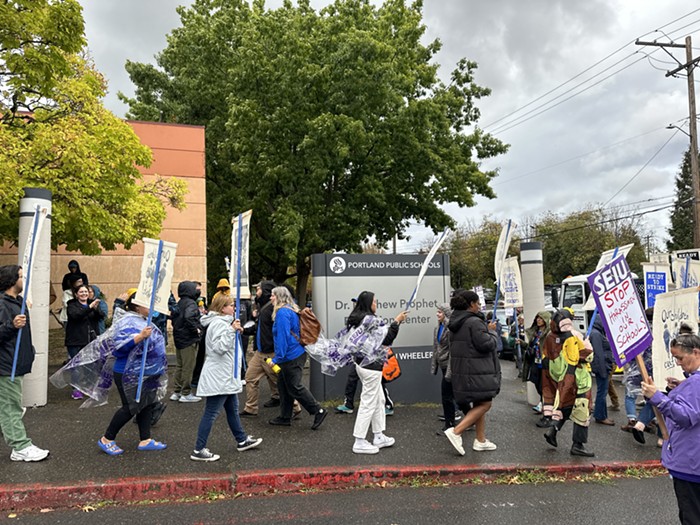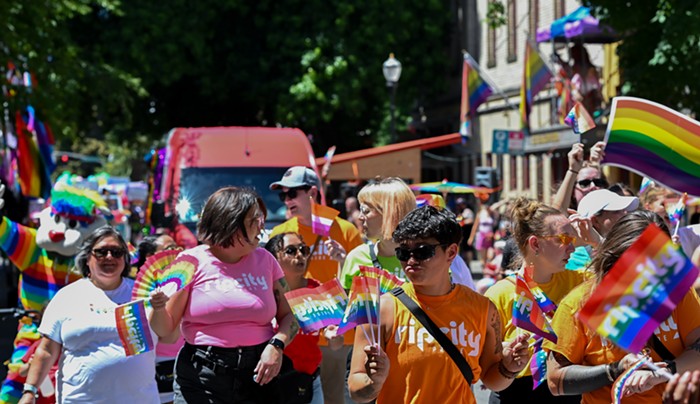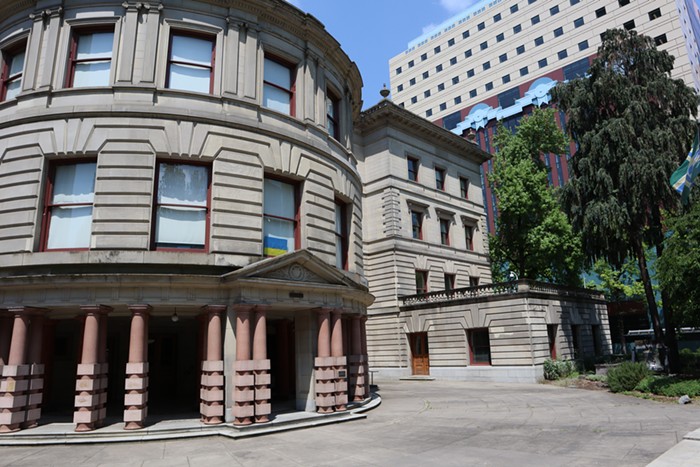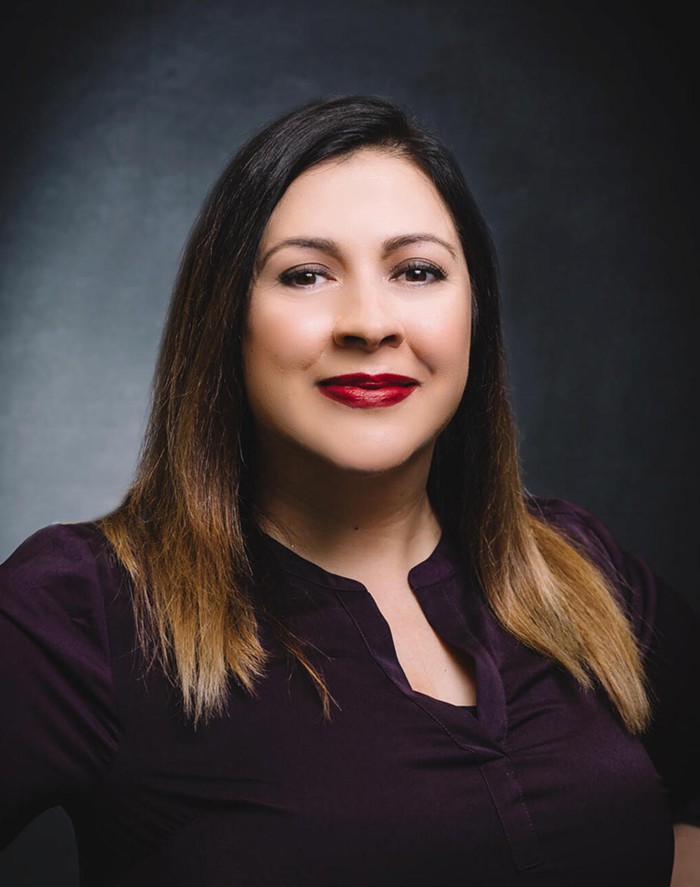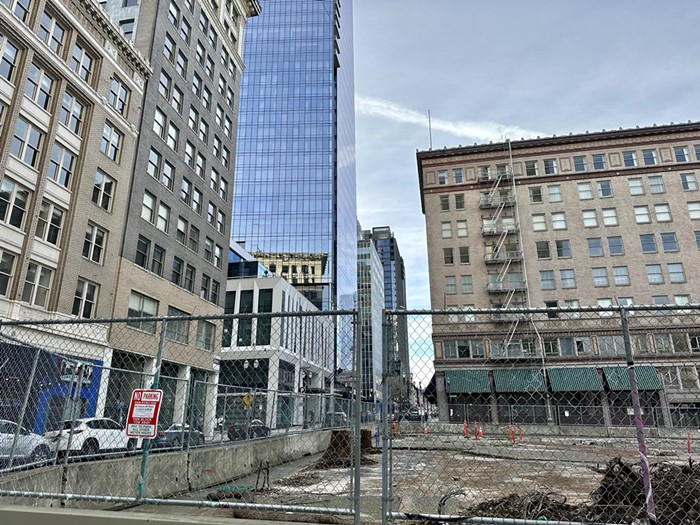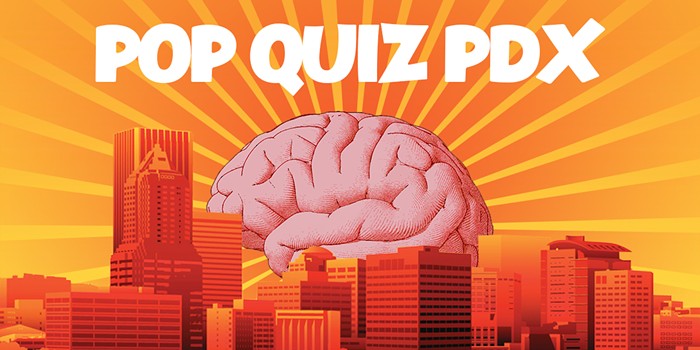Since being founded in 1975, over 10,000 people have received the gift of sight from tissues procured by the Lions Eye Bank of Oregon, in NW Portland. This non-profit provides invaluable ocular tissue for transplants, medical research, and surgical training. Nevertheless, human ocular organs don't come easy. Unfortunately, someone has to die first. And when they do, Sarah Hughes snaps on her gloves and goes to work.
HOW TO PLUCK AN EYEBALL
It's wet outside, dusk. Coffee shop. I'm waiting for Hughes, a 28-year-old lab tech from the Lions Eye Bank. When a friend first introduced us a few years ago, I learned she once worked at the infamous Body Farm in Tennessee--a human testing ground for forensic science. Now she works at Lions.
She arrives, orders something in a cup, and joins me at a window table. She's a confident young redhead with porcelain skin--a Marietta, Georgia transplant with only a slight trace of an accent. Surprisingly, she's upbeat after a 6-to-6 shift at the eye bank, where she removes eyeballs from donor bodies to provide sight for those who go without.
Hughes talks easily about her work, and provides explanations in laymen's terms, so even I can understand what it takes to get at those precious orbs. She tells me there are two basic procedures she performs. The first is bracing the head and removing the eyes. The second is cutting them open and extracting various eyeball tissues.
"We do what's called an enucleation," she begins, "which is harvesting the eye from the donor. There's a kit for the job containing surgical instruments: scissors, tweezers, and a special hook to grab the muscle tissue.
"Typically we remove the whole globe; either at the hospital morgue, or at the funeral home, and bring it back to our lab where we do an incision to remove the cornea."
Hughes happily continues, "We typically use the cornea for transplants. The sclera--which is the white part of the eye--can be preserved and frozen to use later for grafts. Like, if somebody had a trauma to the eye, a cut or something, they can graft on a piece of the sclera. We also use the whole eye or parts of the eye after we remove the cornea, for research and medical training; for new technicians, and training eye doctors on new techniques for surgeries."
"It's all important," Hughes says, "but it's the cornea that restores sight to people. The cornea is right on top. It's what covers your iris. People who have massive scarring in their field of vision can have their cornea replaced."
YOU DON'T REALLY NEED THOSE EYES, DO YOU?
If you want to donate your eyes, Hughes suggests spreading the word before it's too late. Unless you confess on your deathbed to a doctor that you specifically want your eyes donated, it's up to your next of kin to make the decision once you're dead. Be sure to tell friends and family so your wishes are known--otherwise your eyes, and someone else's sight, could go to waste.
"I can see how some people might have a bad reaction to donating a loved one's eyes," Hughes admits, "because unlike internal organs, somebody's looked into these eyes; a mother, a father, son, daughter, whatever. They could see that person. I can understand their fears, but I can also see somebody wanting something good to come from such a tragedy as losing a child."
LIFE ON THE BODY FARM
Hughes clearly has fond memories of the Body Farm in Nashville, a place where future forensic scientists study the effects of human decomposition in a natural environment (corpses left outside). She rattles off tales of students with human goo stuck to their shoes and tracking it into their cars; a stinky "donor" she left in a campus pick-up truck during a lunch break on a long, hot drive to Tennessee. Bloated bodies floating in ponds and human gardens full of rotting limbs... that kind of thing. She was up to her elbows in the stuff.
"I was a graduate student and had an assistantship at the time. One of my jobs was to clean up the [human] remains after they'd been at the research facility for a while. After the body had sufficiently decomposed, we would take the remains back to the morgue and clean off anything (soil, bird droppings, remaining meat, etc.) that was left on them. I numbered all the remains for a catalog, and put them in the permanent skeleton collection for research."
"The part of anthropology that really fascinated me was the identification," Hughes notes, "and what your bones could say about what kind of life you led." Skeletal remains can often show what a person ate, how hard he or she worked, and other lifestyle indicators.
Hughes participated in numerous gruesome experiments--all relating to how the human body decomposes in different conditions. Most of the forensic knowledge used by scientists the world over has come from garden experiments at the Body Farm. Sometimes the students accelerate the decomposition process by cooking human parts in a lab (kitchen), dunking them in acid, and through other inventive procedures. She also photographed decomposing bodies, contributing to an ever-growing "Atlas of Decomposition"--one professor's magnum opus.
"They had some donors in old cars, and they would suspend them, keep them off the ground to see if that affected..."
I interrupt. "What did you call them?"
"Donors. They're people who donated their remains to the research facility. The researchers would place them in various states (out in the open, clothed and unclothed, in water, half buried, etc.) to see how that affected their decomposition. What kind of animal activity would happen, or how the remains would get dispersed."
"One of the Ph.D. students was testing a spontaneous combustion theory," she says, "debunking the 'spontaneous combustion' myth. She acquired some amputated limbs from the teaching hospital and experimented to see how they would burn, note the patterns, and how long it took."
A daughter who harvests eyes and photographs decomposing bodies? Her parents must be so proud.
"Everybody in Tennessee knows what the Body Farm is. All my relatives and friends know why I went to school and how I've dealt with much worse things than what I'm doing now."
GIVING SOMETHING BACK
For Hughes, with a Masters degree in forensic anthropology, working at the eye bank is an extension of her life's work.
"In my head it's part of the same goal," she says. "I'm trying to make things better for somebody, somewhere. Because of my background I don't find this kind of work disturbing."
Even though her job at Lions is something most of us would find hard to stomach, she was happy to take on the task--and from my point of view, it really seems to suit her. When I suggest it must take a heart of steel to do what she does, she tells me it's just the opposite. It's compassion that drives her. And she means it.
"I really look at the humanitarian aspects of it all. When I was in grad school I did my thesis on the role of the forensic anthropologist and human rights issues. I spent four months in Guatemala working with a forensics team there, trying to identify victims of the civil war to return to their families. My goal is to give something back."
Since senior citizens make up the majority of the donor pool (dying far more often than the young), it wasn't unusual that her very first donor at the eye bank was an old lady. Unlike her donor pals at the Body Farm, this one had only been dead for a couple hours when Hughes got the gig.
"I was about to perform this operation on her, and I wasn't sure if I could do it," she recalls, "but in the back of my head I'm thinking about what the outcome is going to be. It's going to be something positive. Someone's going to be able to see again."
***
After a delightful evening discussing eyeball incisions and rotting body parts, we call it a night. Outside it still rains and it's dark. I see Sarah to the door, thinking how lucky I am to have the opportunity to see anything at all.
